How the Dead Are Honoured Around the World

Team Money Savings Advice

UK: Halloween
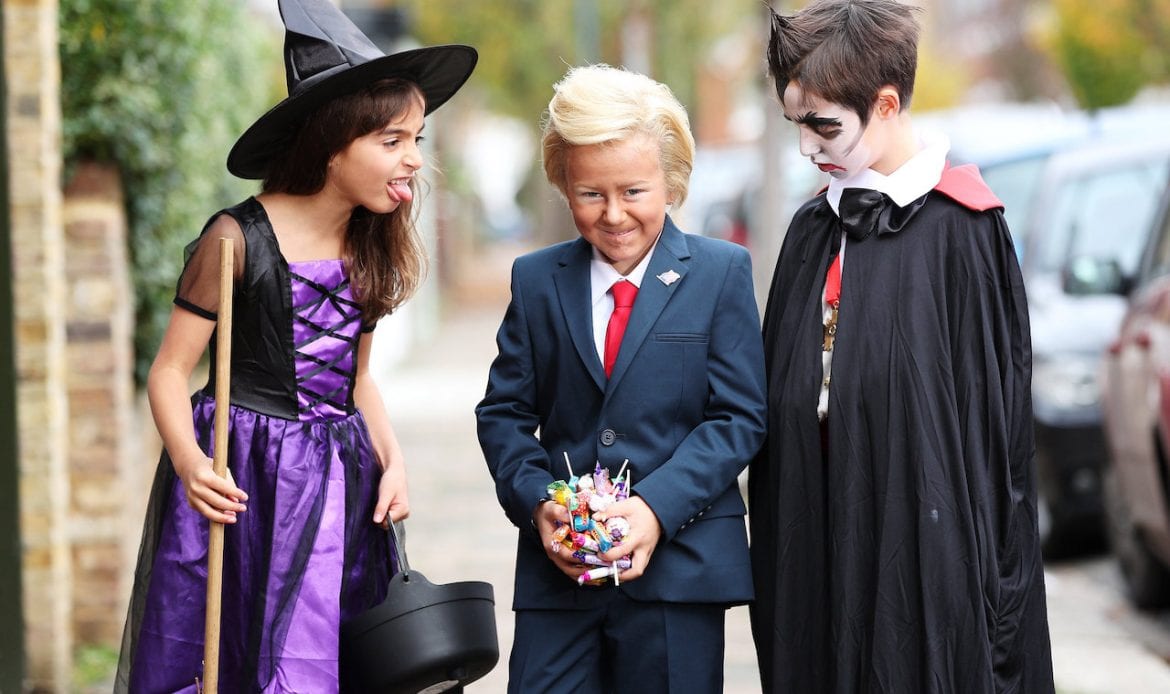
In the UK, Halloween is a time to raid charity shops and bargain bins for fancy dress and send kids to compete for sweets and chocolates from obliging neighbours. It’s hardly a religious affair, and besides subjecting ourselves to whatever horror movie is being shown on telly, it tends to go by without a second thought for the dead.
But it wasn’t always this way- the festival that now ends in a dizzying sugar-high for anyone under the age of 10 has its roots in an ancient Celtic tradition of honouring the ancestral spirits.
Celtic tribes knew the festival as Samhain, and the day marked the transition from the harvest season into the winter months. On that very day, it was possible to cross the threshold between the material and spiritual worlds, and the spirits of the dead came to revisit their old homes.
Great feasts were held to celebrate and feed the returning ancestors, and people would go ‘mumming’ for a share of the goodies. And what on earth is mumming? It’s when people dressed up and went from door-to-door performing tricks in exchange for food. Sound familiar?
But even though the Halloween we know today is far-removed from its roots as a festival to honour the dead, there are still millions of people around the globe who venerate the dead with spectacular festivals and quiet, personal rites, to ensure they are not forgotten among the living.
Read on to learn about nine fascinating festivals from all around the world.
North & South Korea: Chuseok
Autumn Eve

Despite their bitter separation, both North and South Korea celebrate this harvest festival around the autumn equinox each year, which long predates the nations’ split. To celebrate a bountiful harvest, people travel to their ancestral home towns to gather with family and enjoy traditional food and wine prepared with the freshly-harvested rice, fruit and vegetables.
Ancestors keep a watchful eye over their descendants and ensure that a good harvest is provided- so paying thanks to them is central to the festivities. This is done through charye, the ritual offering of foods prepared with the harvest crops, and seongmyo, where relatives visit ancestral graves to pay respects and clear brush and weeds from the site.
Homs, Syria: Khamis Al-Halawa
Thursday of Sweetness
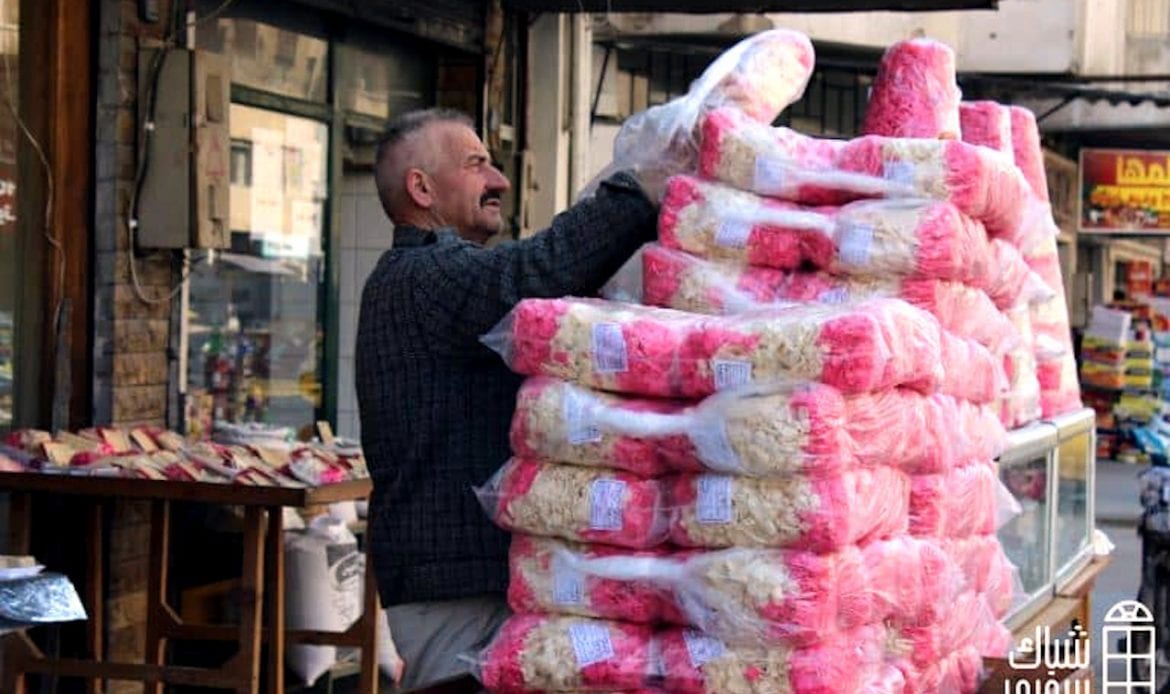
Before the start of the civil war, Homs was a thriving and diverse city which embodied the religious diversity of the Levant. It was also one of the last places on earth to celebrate the ‘Thursday of the Dead’, a festival with its roots in the crusades.
12th-century crusader and Sultan of Syria and Egypt, Saladin, wanted to calm rising tensions between Muslims and Christians across the Middle East. To help the two hostile communities become more comfortable with each other, he created a new celebration- to be held on Holy Thursday- where all would attend the graves of their dead relatives to pay respects and give alms to the poor. This became known as ‘Thursday of the Dead’.
Over the years, the festival has all but died out- with Homs the only exception. There, it became known as the ‘Thursday of Sweetness’, because of the mountains of pink and white Homsi Halawa sweets which could be seen stacked outside bakeries across the city. People buy sweets to share with family, and the poor, and families visit the graves of their dead to pay respect.
After the city was subjected to a devastating three-year-long siege, many of the city’s residents fled as soon as corridors out Homs opened up in 2015- but in cities as far-flung as Cairo and Abyrystwyth, former Homs residents try to keep the festival alive.
Mexico: Día de Muertos
Day of the Dead
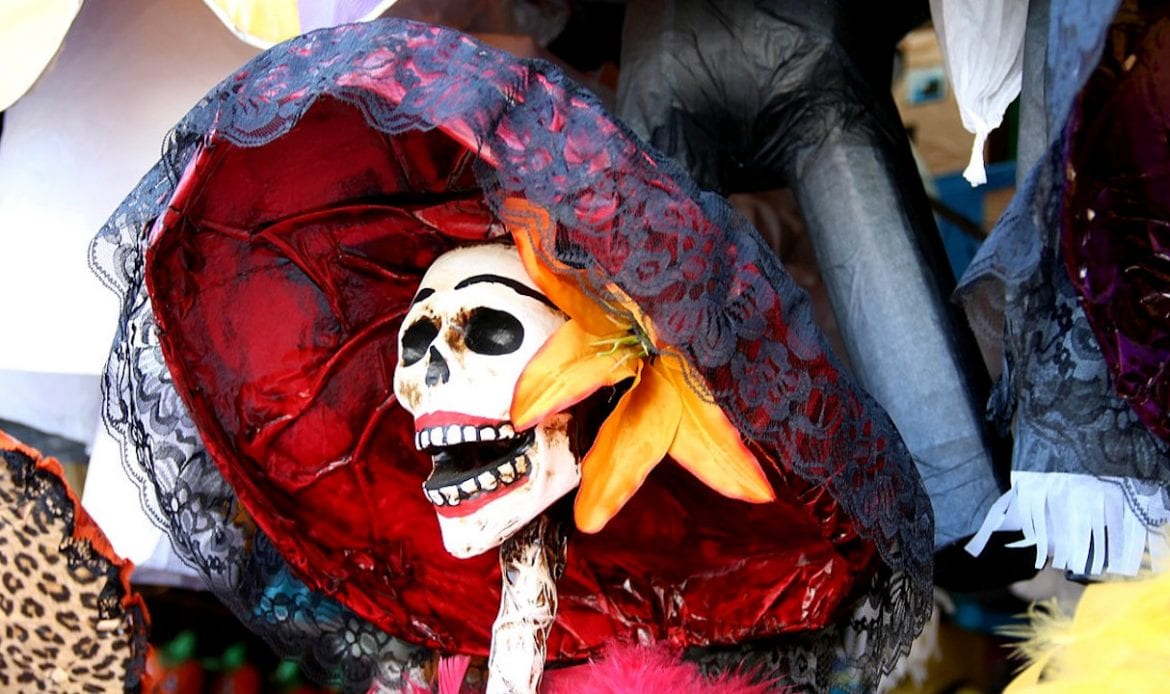
Perhaps one of the most famous festivals honouring the dead, Día de Muertos is Mexico’s colourful three-day celebration of the spirit world and a chance to remember friends and family who have died. Starting each year on 31st October, the festival lasts for three days, culminating on All Souls Day, 2nd November.
If the dates seem spookily similar to Halloween, don’t worry- it’s no otherworldly coincidence. The roots of Día de Muertos lie in a pre-Colombium Aztec festival dedicated to the goddess of the afterlife, Mictecacihuat. But as the Catholic church imposed Christianity on Mesoamerican cultures, indigenous and Christian ideas became intertwined: giving birth to Día de Muertos on All Souls Day.
Make no mistake though, the Day of the Dead is not just a Mexican version of Halloween. Festivities kick off on 31st October, when children build an ofrenda, a colourful shrine, of toys, foods and cherished belongings, to welcome home the souls of little children who have died in the family. On the following day, it is the adults’ turn; as the spirits of grown men and women will visit the family that night. The final day of the festivities is spent at the graveside of dead family members.
The day is spent decorating their tombs and arranging bright flowers, sugar skulls, blankets for rest and the favourite food and drink of the dead around the place.
The point of all this is not just to honour the dead; it is to entice their spirit back home so that they can convey the hopes and prayers of their living descendants to the other world. Families also compose witty epithets for the dead, known as calavera, and burn copal incense at the graveside.
Meanwhile, in towns and cities, festival-goers dress up as skeletons and spill into the streets baring colourful face-paint in a riotous embrace of the most formidable stage in life’s natural cycle.
Nepal & India: Pitri Paksha
Fortnight of the Ancestors
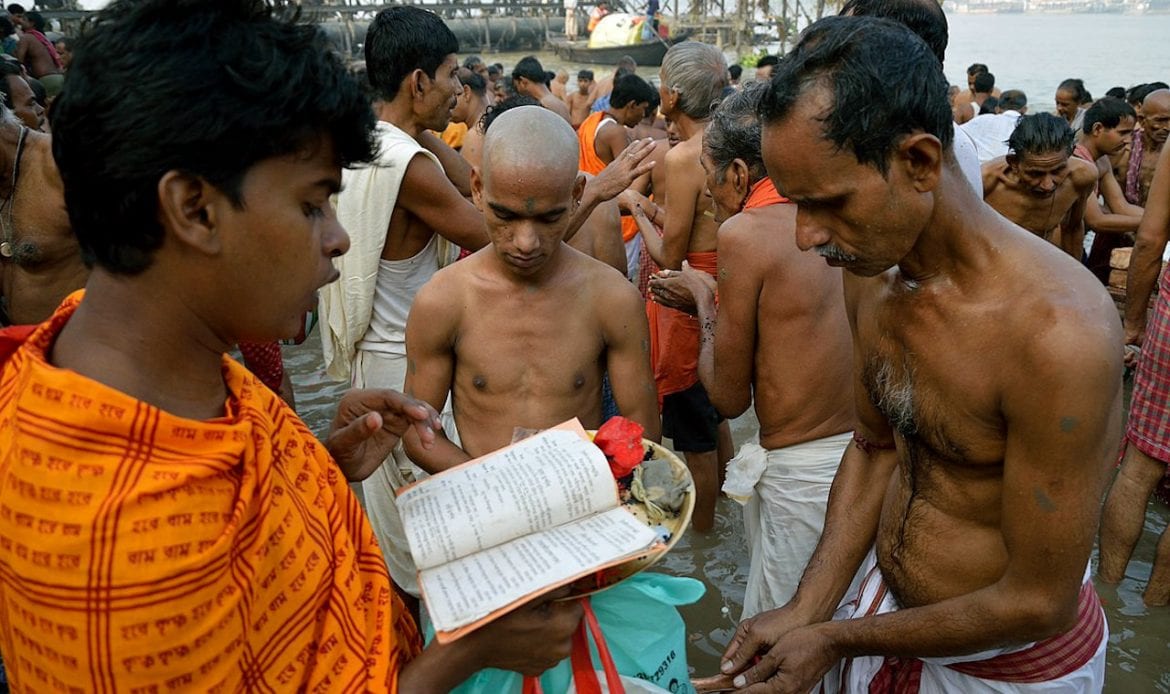
Hindus believe that after death, the soul lives on as part of en endless cycle of reincarnation known as samsara, and as long as a person exists in this circuit, they will never be united with God.
When someone dies, their descendants inherit an important duty to carry out on their behalf over the
period of Pitri Paksha, or Shradda: they must demonstrate their devotion in order to help their ancestors transcend the endless cycle and help them achieve moksha (liberation).
Over the course of 16 days, the oldest son on the father’s side of the family makes daily devotions and offerings to three generations of ancestors and Yama, the God of death. Until the prayers of the family have been answered, the souls of the deceased are sentenced to lurk in a realm between heaven and earth, known as pitri loka.
Women in the family cook foods which the deceased enjoyed when they were alive, as well as special dishes for ancestral offerings. Each day in Pitri Paksha, the oldest son take a ritual bath and wear special cloth, before invoking the family’s ancestors and offering them the food cooked by the women. If a bird swoops down and eats the offering, it is thought to be a sign that the family’s supplications have been accepted and the deceased may finally ascend.
Ukraine, Russia & Belarus: Radunitsa
Day of Rejoicing
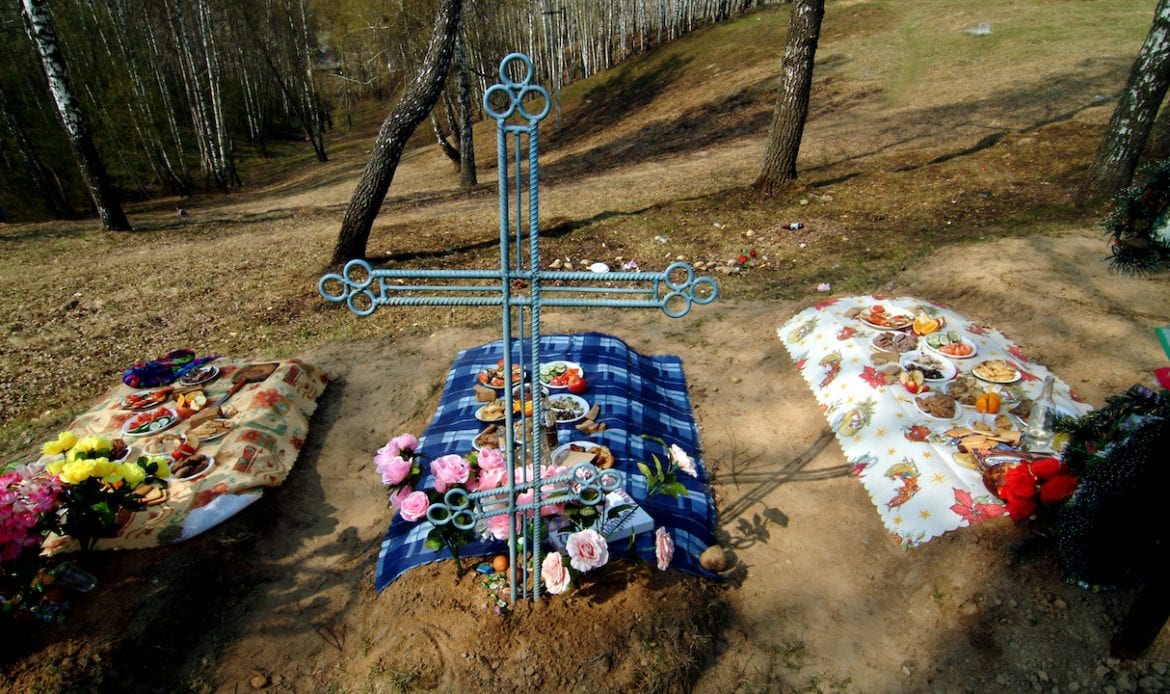
As the snows of winter melt away, followers of the Russian Orthodox church prepare to celebrate festivals focused on death and rebirth.
After celebrating Easter and the resurrection, families ready themselves to mark a tradition with deep roots in the region: Radunitsa.
On Easter Tuesday, people prepare a spread of traditional foods, including painted eggs, honey biscuits and special breads, for a graveside picnic with their ancestors. A libation of mead is poured on the graves of the departed, and the party may indulge in a tipple (or two) to toast the dead.
.Slavic cultures have long-celebrated the festival, which used to mark the start of marriage season, but it has become melded with Christian sensibilities over the years. Now, the celebration is taken to be a reflection on the resurrection of Jesus and symbolise hope for the souls of the dead.
Nigeriam, Togo & Benin: ?dun Egúngún
Festival of the Walking Dead
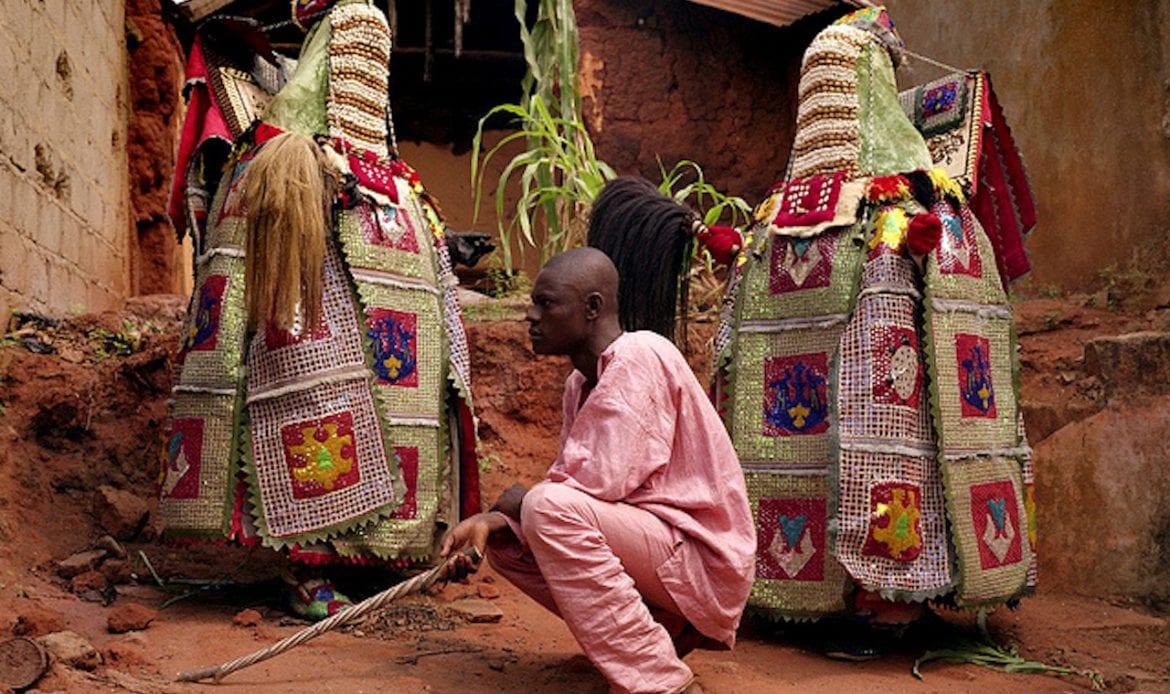
?dun Egúngún is an annual ceremony celebrated by people who follow Ifá, the religion of the Yoruba ethnic groups. Even though many Yoruba people identify as Christians or Muslims, Ifá still forms part of everyday life for many people, whose spiritual lives interweave different elements of both.
In the Egúngún ceremony, priests disguise themselves in highly elaborate, towering costumes and colourful masks. The costumes are painstakingly crafted by skilled artisans over the course of the year, and composed of layers which represent the layers of understanding separating the worldly and the spiritual.
People gather in the streets as the Egúngún dance to ceremonial drums and invoke the ancestors to come and speak to the living.
The ancestors have a very specific task at hand during ?dun Egúngún: it is a chance to let their descendants know what they think of their morals and customs. If people have strayed too far from proper Ifá morals, it’s the Egúngún’s job to express the specific concerns of the ancestors through dance.
How Can Money Savings Advice Help You With a Funeral Plan?
Here at Money Savings Advice, we have partnered with some of the UK’s leading Funeral Plan brokers. They have already helped thousands of people get the best Funeral Plan deal and they can do the same for you.
Choosing an independent adviser means they won’t recommend a scheme unless they are sure it is in your best interests. Their advice is also regulated by the FCA, which gives you an additional layer of protection.
If you would like to speak to one of these brokers who can provide you with a ‘whole market quote’ then click on the below and answer the very simple questions.
How does Money Savings Advice work
Money Savings Advice is an independent editorial company providing detailed information about numerous financial niches with the aim of helping consumers make informed financial decisions. We aim to provide hints, tips and techniques to help you make your money work for you. However, we are not perfect, and we accept no liability if anything we write about goes wrong.


